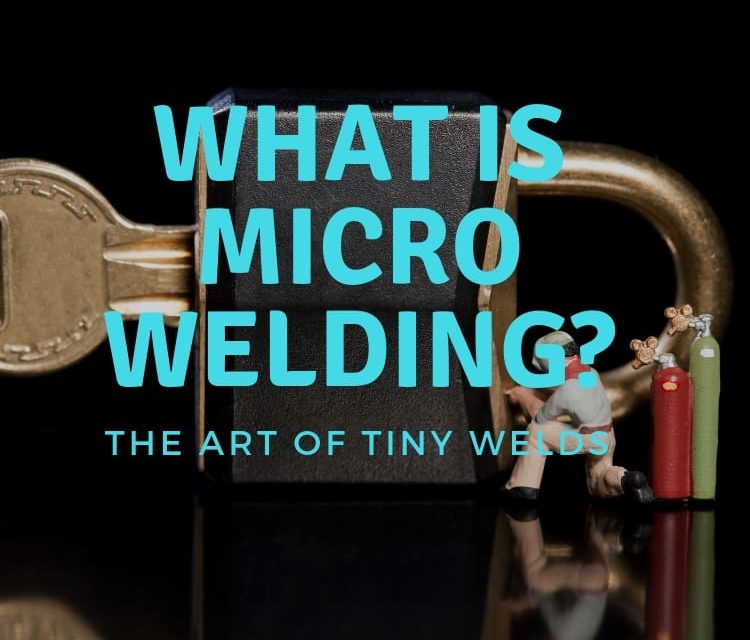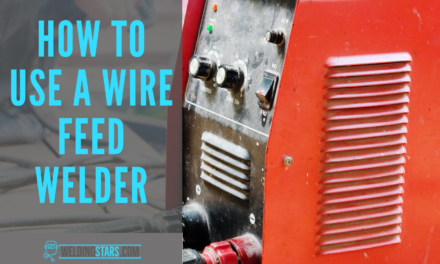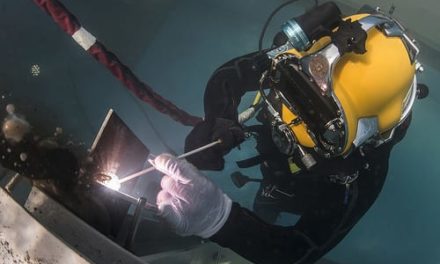The ‘micro’ version of welding is not all that different from the traditional technique. Mainly in that it has been developed as a way to join two delicate and small metal components together. This technique welds together both non-ferrous and ferrous parts of the metal piece.
These tiny parts usually have a thickness that’s less than 0.5 millimeters while the cross-section is about 10 square millimeters. The welding beads produced have a much smaller cross-section at 0.065 and 0.005.
Rather than a skill that is used robustly in engineering, construction and pipe fitting, micro welding is widely considered to be a more intricate form than its robust, life-sized version. This is because of how much precision and focus is required by workers.
Perceived as an art form by many, micro welding is carried out on a much smaller area than regular welding. Comparatively, lesser heat is needed as well; higher temperatures are not applied as it risks affecting the surrounding metal component. Precise levels of heating are determined first so that the joint between two components can be fused with accuracy.
The Process
For regular welders, the job of micro welding is quite complex because they haven’t implemented it on such a minute scale. To begin with, micro welders usually have to work with very thin wires that have a minuscule diameter of 0.005 millimeters. However, despite being very small, extremely thin wires are fused with pinpoint accuracy using specialized equipment that features advanced technologies.
Also, since it is carried out using miniature equipment, the entire process has to be observed under a microscope while the weld is wrought. With the help of a microscope, minutely thin wires and components are welded using precise heat levels, within a controlled environment, with great skill. Another feature that is highly needed for this process is practice because it is only with training that micro welders know how much energy to apply to metal components so that they fuse but don’t break apart.
Types of Micro Welding
As with all welding and soldering processes, micro welding can be performed in various ways as well. There are a good many types of micro welding and their applications are equally different. Micro welding has various natures, such as electrostatic, cold, laser, thermocompression, and even pressure-contact. In general, however, there are four types of it that all micro welders are trained to be experts in.
Micro Laser Welding
This technique is described as type 1 and makes use of a fractional laser in the solid state to fuse two metal components and create a seamless weld. Certain usable applications are implemented into this micro welding procedure. This allows for a fully automated procedure to be carried out. If carried out with care and accuracy, this laser type of micro welding can produce the highest quality of welds.
By using a fractional laser, welds are created deep inside the component. Also, implementing the use of a laser doesn’t require any pressure because a laser can be operated to move and fuse metals without the need for a vacuum chamber.
The benefit of utilizing micro laser welding is that it doesn’t allow contamination of any sort to occur. This saves the need to use a shielding gas for when micro welders are working to wrought reactive metals.
TIG Micro Welding
This variant of micro welding makes it necessary to employ tools and equipment used for regular TIG welding. The tool that is used is smaller in size than a regular pen and can function accurately with less chance of mistakes.
As a plus, this type of micro welding doesn’t produce as much residual stress either. On a similar note, a TIG micro weld has a more integrity, when it comes to structure. By using TIG micro welding, micro welders can retain the longevity of once-damaged components and fuse back damaged parts even in the case that they have a higher alloy density.
Furthermore, this type of micro welding can be implemented to melt and connect two points together without the requirement of a filling wire. By using TIG micro welding, engineers can produce welds that fill in the gaps between two metal parts.
Flash Micro Welding
This kind of micro welding is developed for the sole purposes of reducing costs and increasing levels of production. It is commonly used for processing steel rods with larger diameters. Flash micro welding is consistent at creating strong welds using heavier pressures that are released by a cam assembly, which is in turn driven by a powerful motor.
Usually referred to as a low-key version of butt welding tools, flash micro welding is employed for joining two metal components, connecting ends and creating a hot junction for a thermocouple made from different wires.
If analyzed carefully, one can notice that there is little difference between the machine used for flash micro welding and the one used in regular flash welding procedures. This kind of micro welding also has a unique implementation; it is employed to create beautiful chains that are made from either regular or precious metals such as gold or silver. This technique can even be performed automatically so that it creates better links that are resistant to breaking.
Resistance Micro Welding
This class of micro welding deploys a smaller version of welding equipment to create welds that are seam-resistant or so-called spot welds. It performs this type of welding by clasping together the different parts of the metal that need to be welded. This is done between electrodes that are meticulously built so that they can apply the right current flow and pressure during the procedure.
Using this class of micro welding, workers can operate projection welds by utilizing technology that is developed to leverage any deformations or bulges located on the surface of the metal. This makes it much easier to align the position of the metallic elements that need to be welded together.
When practicing resistance welding on fairly small parts, care should be taken to consider the part’s alloy composition, its geometry and even contact resistance. By keeping all these things in mind before proceeding with resistance or spot welding, consistent results can be achieved.






